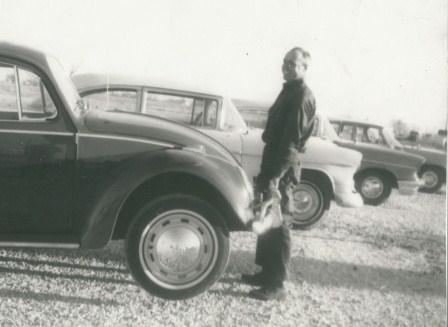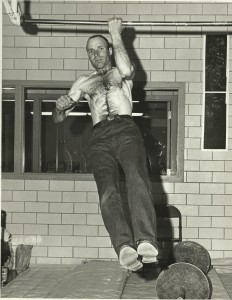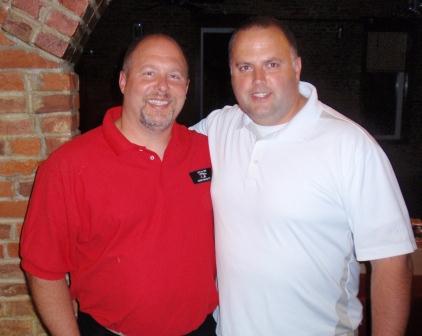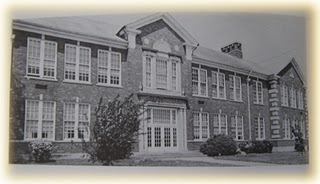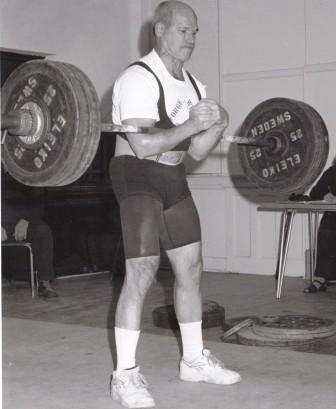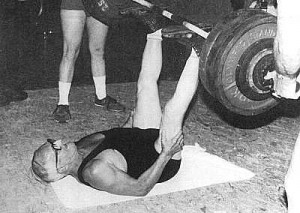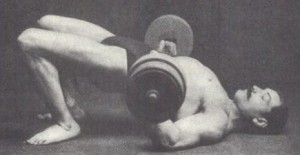Wayne Smith: All Round Legend Part I
by Thom Van Vleck
Wayne Smith was one of the original Jackson Weightlifting Club members. He usually lifted in the 148lb class and competed in Olympic lifting meets, Powerlifting, and early “odd lift” meets and later USAWA meets. Smith was born in 1932 and is currently 78 years old.
Wayne told me he first became interested in weightlifting as a kid with his twin brother, Ward. But it was not until he joined the Navy that he actually started training regularly. While in the Navy he was stationed in Hawaii and it was at this time he made a life long friendship with Tommy Kono (If you don’t know, Kono was one of the greatest Olympic lifters of all time and was actually voted “Weightlifter of the Century”). Wayne has letters he has received over the years and a personally autographed copy of Kono’s book on lifting (Weightlifting: Olympic Style). There is also a letter from Gary Cleveland. Cleveland was a great York lifter who later put out a newsletter called the Avian Movement Advocate that Smith would often contribute to. The letter talks about a letter Kono sent to Cleveland about Smith and it was very positive. Smith told me that it meant a lot to him that Kono would write that letter about him.
It was around 1957 that Wayne returned from the Navy and was approached by a group of brothers trying to find out more about weightlifting. Smith felt he was no expert but these young men, the Jackson Brothers, knew almost nothing and were lifting makeshift barbells made of concrete poured in buckets, old flywheels for extra plates, anvils, and pretty much anything that wasn’t tied down. My favorite story was about the first thing Smith told them was to reverse their grip on their cleans, presses, and jerks. They were using a “curl” or “reverse” grip! Soon they were working out on a regular basis and the foundation for the Jackson Weightlifting Club as we know it today was laid.
Wayne’s first meet was in Omaha, Nebraska in 1958. His Olympic lifting and Powerlifting career lasted until 1971. During that time he entered many meets as a member of the Jackson Weightlifting Club. He was part of a JWC team that won two state team titles. He was also proud of the fact he never failed to total and he never failed to make weight for his weight class. He said Kono had taught him to take a safe lift then go all out on 2nd and 3rd attempts and this served Wayne well. In 1964 won the Missouri State Championships as a middleweight. Just prior to winning that title he was told he had a lung condition and at the rate he was deteriorating he had maybe two years to live! He received treatment from Dr. Valuck who he credits with diagnosing him and treating him back to health!
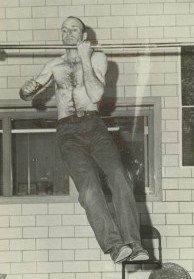
Smith at the top of one of his "perfect" one-arm chins at a powerlifting meet in Minnesota in 1966. You will find a poster of this picture on the wall in Clark's Gym.
In the late 70’s, Wayne began entering “odd lift” meets put on by Bill Clark. He also lifted in the early USAWA years. It was in 1977 that Bill nominated Wayne for the AAU Weightlifting Hall of Fame and Wayne was later inducted. During his lifting years Wayne won 4 major titles. Other than his state title in 1964, in 1966 he won the City Championships in Kirksville, in 1966 he won the Open Powerlifting title in St. Paul, Minnesota (where the chin up photo was take, more on that later!), and in 1971 he won his last title, a powerlifting meet in Jefferson City were he won the Open title.
Wayne was also a chin up specialist. He would often challenge all comers to a chin up contest. He told me he was only beaten one time. It was by another JWC member named Dr. Rex Lee. Rex had joined the club while going to the Kirksville College of Osteopathic Medicine and lifted as 114lber. Rex weighed only 105lbs when he beat Smith by one rep. My Uncle Phil told me that every meet they ever competed in at some point Smith would put on a chinning exhibition. If there was no bar to chin on then Phil and another member of the club would hold a 45lb bar up for Smith to chin on! In 1998 I “revived” the club and in 1999 held a strongman contest and Highland Games that eventually turned into the Kirksville Games and the JWC Strongman Championships/Highlander. My brother and I held a bar up and at age 68 Wayne did a perfect one arm chin up! When I say perfect he did a “dead weight” pull and no “kip” or “kick”. That’s how he always did them and had a best of 6 one arm chins.
Coming Soon: Part II
